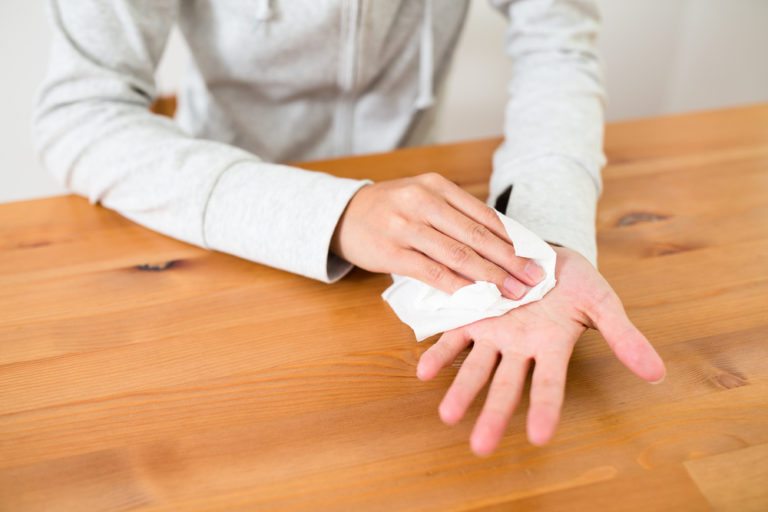
Hyperhidrosis
Sweating is a part of life. And for most of us it’s actually an incredibly helpful biological process that keeps us cool in the blistering summer heat. But for people who suffer from hyperhidrosis, sweating is embarrassing and inconvenient.
Hyperhydrosis is a condition that affects around 2-3% of Americans. People who suffer from hyperhydrosis sweat excessively. They sweat even when their body does not need to cool off. This can be particularly inconvenient when a person is in a crowd, in a meeting, or just around people.
People with this condition tend to sweat from only one or two parts of their body, while other areas remain dry. The most common areas that people sweat from are the armpits and hands (palms).
What causes Hyperhidrosis?
Hyperhidrosis is a neurological condition, however, hormone imbalances, infections, and systemic diseases can also lead to it. People who suffer from hyperhidrosis are often triggered by certain emotions or situations and can actually sweat the entire time they are awake.
How can I treat Hyperhidrosis?
Often the first step toward treating this bothersome condition is simply the use of over the counter antiperspirants. These are easily accessible and something that people can try without having to go to the doctor. For some it might help a little, but for most they’ll need additional treatment options.
For those who need something a little stronger, there are prescription antiperspirants which are much stronger and can make a difference in sweating.
There are also oral medications which can be taken to mitigate sweating. These Anticholinergics are taken on a daily basis and greatly reduce sweating. One of the most recent breakthroughs in the treatment of hyperhidrosis is the use of Botox. Injections in the armit can paralyze the sweat glands and prevent them from responding to any stimuli.
For those looking for a permanent solution, miraDry is an innovative treatment option that actually permanently kills sweat glands through the use of microwaves. Other treatments using lasers perform work similarly.
Endoscopic Thoracic Sympathectomy
A last resort for most doctors, this procedure actually cuts the nerves that trigger whatever body area suffers from hyperhidrosis. By severing these nerves signals can no longer pass to the glands and you do not sweat from that area any more.
The procedure is performed under general anesthesia. An incision is made under the arm where the doctor plans to enter. He will collapse the lung on whatever side he is working on so that he has room to move around and air does not flow in and out while you’re in surgery.
The endoscope is then inserted and used to look for the nerves the surgeon plans to cut. Once the nerves are cut the surgeon then reinflates the lung and sutures the incisions. He may also place a drainage tube to assist in healing.
If you believe you suffer from hyperhidrosis, give our office a call. We have treated many patients and are happy to help guide you through the treatment process and get your quality of life back.

